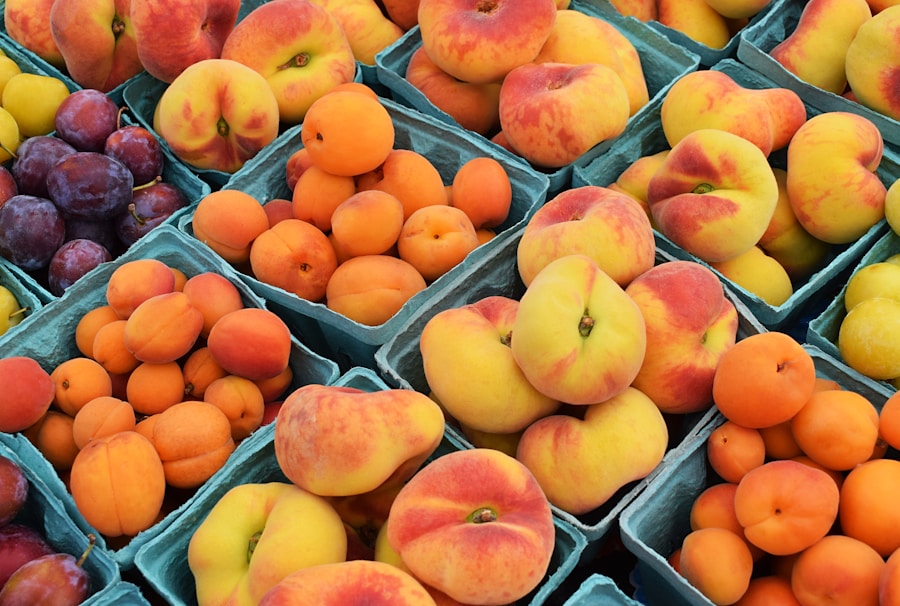Spring is a time of renewal and rejuvenation, and what better way to celebrate the season than by incorporating fresh, seasonal produce into care home menus? Spring produce is not only delicious, but it also offers a wide range of nutritional benefits that can support the health and well-being of care home residents. From vibrant fruits like strawberries and rhubarb to crisp vegetables like asparagus and peas, spring produce is packed with essential vitamins, minerals, and antioxidants that can help to boost immunity, support digestion, and promote overall health. By taking advantage of the abundance of spring produce, care homes can create menus that are not only nutritious but also exciting and enjoyable for residents.
Benefits of Incorporating Seasonal Produce into Care Home Menus
Incorporating seasonal produce into care home menus offers a multitude of benefits for residents. Firstly, seasonal produce is often fresher and more flavourful than out-of-season options, which can make meals more enjoyable for residents. Additionally, seasonal produce is typically more affordable and readily available, making it a cost-effective choice for care homes. From a nutritional standpoint, seasonal produce is at its peak in terms of both flavour and nutrient content, meaning that residents can benefit from a wide range of essential vitamins, minerals, and antioxidants. By incorporating seasonal produce into care home menus, staff can also take advantage of the opportunity to introduce residents to new and exciting fruits and vegetables, helping to expand their palates and encourage a more varied diet.
Nutritional Value of Spring Fruits and Vegetables
Spring is a time when an abundance of fresh fruits and vegetables come into season, offering a wide range of nutritional benefits for care home residents. Fruits such as strawberries, rhubarb, and apricots are rich in vitamin C, which can help to support immune function and promote healthy skin. Additionally, these fruits are also high in fibre, which can support digestive health and help to prevent constipation. On the vegetable front, spring favourites like asparagus, peas, and spinach are packed with essential nutrients such as vitamin K, folate, and iron, which are important for bone health, red blood cell production, and overall energy levels. By incorporating these spring fruits and vegetables into care home menus, staff can ensure that residents are receiving a wide range of essential nutrients to support their overall health and well-being.
Tips for Incorporating Spring Produce into Care Home Menus
Incorporating spring produce into care home menus can be a simple and enjoyable process with the right approach. One tip for incorporating spring produce is to plan menus around what is in season, taking advantage of the abundance of fresh fruits and vegetables available during the spring months. This can help to ensure that meals are not only nutritious but also more cost-effective. Another tip is to get creative with how spring produce is prepared and presented. For example, staff can experiment with different cooking methods such as grilling or roasting vegetables like asparagus and artichokes to bring out their natural sweetness and enhance their flavour. Additionally, incorporating spring produce into salads, soups, and smoothies can provide residents with a variety of options for enjoying these seasonal ingredients.
Seasonal Recipes for Care Home Menus
When it comes to incorporating spring produce into care home menus, there are countless delicious recipes to choose from. For example, a simple strawberry and spinach salad can be a refreshing and nutritious option for residents, combining the sweetness of fresh strawberries with the earthy flavour of spinach. Another idea is to create a vibrant asparagus and pea risotto, which can be a comforting and satisfying dish for residents to enjoy. For those with a sweet tooth, rhubarb crumble or apricot compote can be delightful dessert options that showcase the natural sweetness of these spring fruits. By incorporating these seasonal recipes into care home menus, staff can provide residents with a variety of delicious and nutritious options to enjoy throughout the spring season.
Considerations for Special Dietary Needs
When planning care home menus that incorporate spring produce, it’s important to consider the special dietary needs of residents. For example, some residents may have allergies or intolerances to certain fruits or vegetables, so it’s important to provide alternative options that meet their needs. Additionally, residents with specific dietary requirements such as diabetes or high blood pressure may need special consideration when incorporating spring produce into their meals. Staff should work closely with residents and their families to ensure that their dietary needs are met while still incorporating the benefits of seasonal produce into their meals.
Conclusion and Final Tips for Spring Menu Planning
In conclusion, incorporating spring produce into care home menus offers a wide range of benefits for residents, from nutritional value to cost-effectiveness and variety. By taking advantage of the abundance of fresh fruits and vegetables available during the spring months, care homes can create menus that are not only nutritious but also exciting and enjoyable for residents. When planning spring menus, it’s important to consider the special dietary needs of residents and work closely with them to ensure that their needs are met while still incorporating the benefits of seasonal produce into their meals. With a little creativity and planning, care homes can create menus that celebrate the best of spring produce while supporting the health and well-being of their residents.
